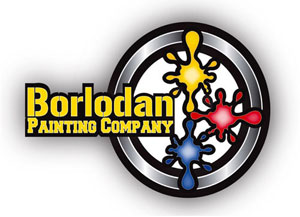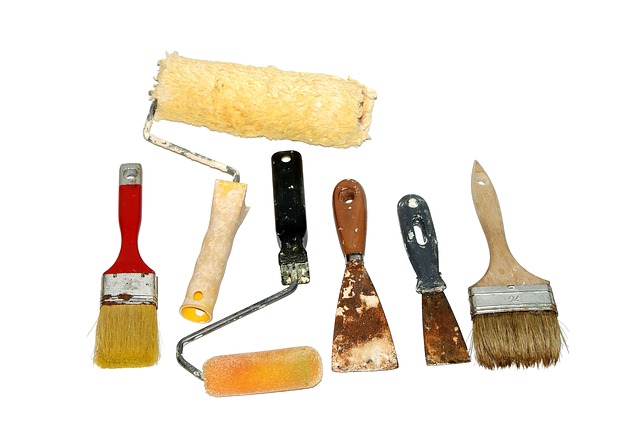-Finally! The paint job you’ve been saving for has been done and it’s the weekend to show off your newly painted home to your friends. Invitations have gone out, RSVPs have been acknowledged, the menu is planned and little Johnny rode his scooter down the hall and left gouges and skid marks on the wall!
Your options are to call the painter back to fix the damage, rush down to the hardware store get a paint brush to cover the damage, or just ignore it and hope your guests don’t notice. “There is another, much more proactive option,” said George Borlodan, the painter from Atascadero’s Borlodan Painting Company. “Just as everyone keeps a toolbox of hammers, pliers and screwdrivers for repairs around the house, they can benefit from building a painting tool kit.”
There are some things you can do to repair damage to painted surfaces. Whether the damage involves gouges, scrapes, smudges from handprints or children’s art work, there are times when repairing a damaged paint job needs an immediate touch-up.
Borlodan recommends keeping the following tools and materials handy for these small repairs:
- Extra paint: When the paint job is done, ask the painter about the best way to store left-over paint. Accidents happen and, at some point, you are going to want to touch up some spots of the original paint job that has been damaged. Ask the Atascadero painter for recommendations for storing left-over paint or for matching the paint color.
- Brushes and rollers: The quality of the brush or roller can be important. Inexpensive brushes can leave bristles embedded in the paint. Roller covers are not necessarily one-size-fits-all. For home or office touch-up, roller covers for interior latex are going to meet most needs.
- A pouring spout is a handy tool for pouring paint into the paint tray.
- Paint tray: One metal paint tray and several disposable liners will also come in handy, especially when using a roller and to reduce clean-up time.
- Drop cloths: Keep three or four drop clothes in the paint supply kit. There are disposable drop cloths and heavier-duty reusable cloths. If you choose disposable drop cloths, make sure the plastic is thick enough that it doesn’t tear under foot traffic.
- Blue painter’s tape comes in different widths and prevents paint from getting onto areas that you don’t want painted, like window or door trim.
- Paint stirrers: These usually come free with paint purchases, but can also be purchased in packages for an inexpensive cost. Stir all paint before using it.
- Primer might be necessary to cover stains and dark smudges. Otherwise, plan on applying enough coats of your regular paint to cover the stains.
- Spackle to fill holes or gouges and a tool for spreading the spackle
- Sandpaper for sanding down the dried spackle to create a smooth surface for painting
- Heavy screwdriver or special tool for opening paint cans
- Cleaning materials such as sponges and soap for cleaning a surface to remove dust and grease before painting, and for cleaning the paint brushes
Borlodan Painting Company has been serving California’s Central Coast communities since 2005. The Borlodan team takes pride in delivering both interior and exterior paint jobs that are made to last for residential and commercial properties. Founder George Borlodan and his team know that even within San Luis Obispo County, the location of every project brings unique demands.
Every job is approached with care and professionalism, from proper surface preparation to choosing paint brands that can stand up to outdoor weather, or the wear-and-tear of indoor life. “The Borlodan Touch” that has made the company the Atascadero painter of choice comes from George’s refusal to cut corners.
Call today for a consultation!

